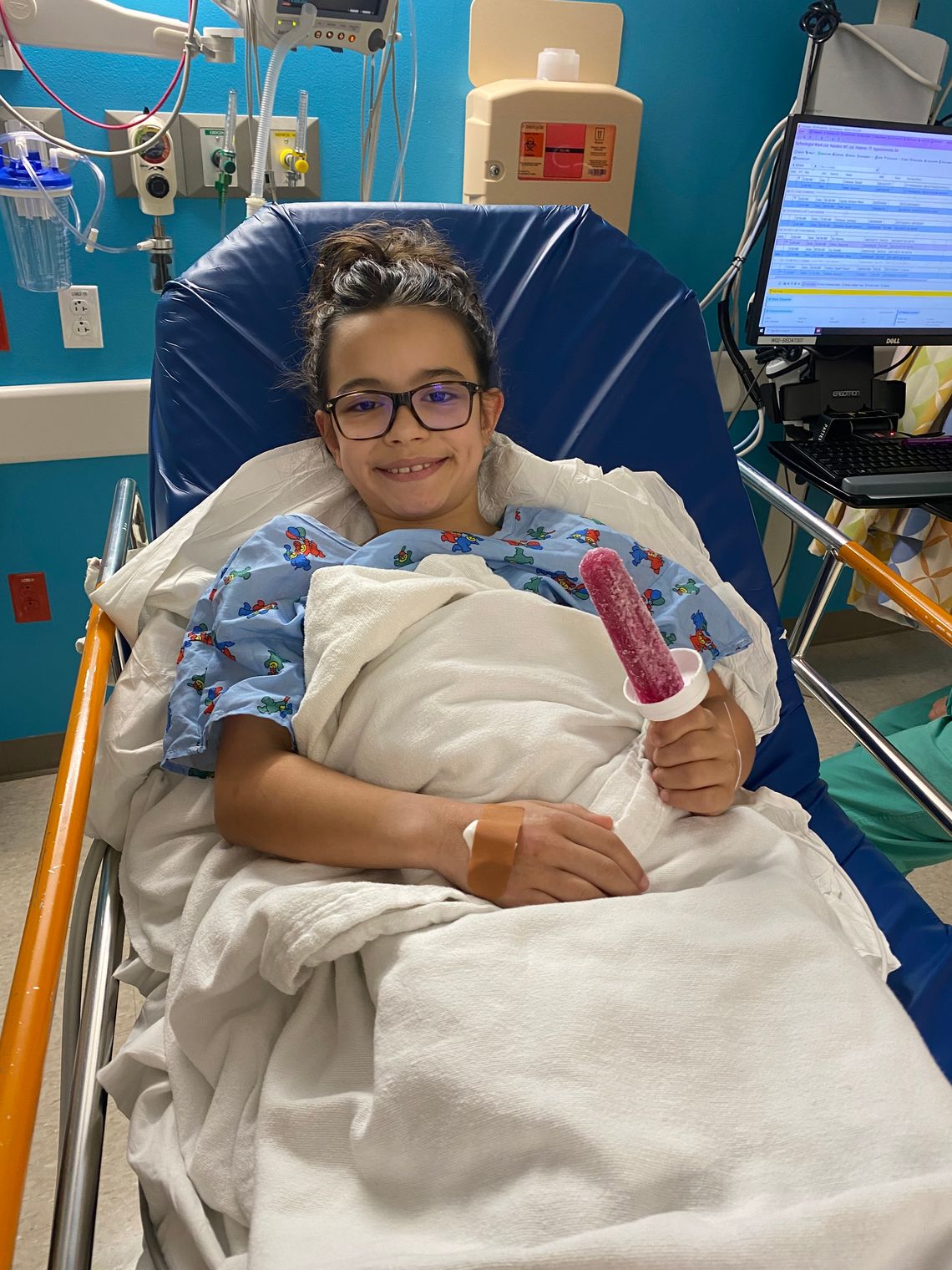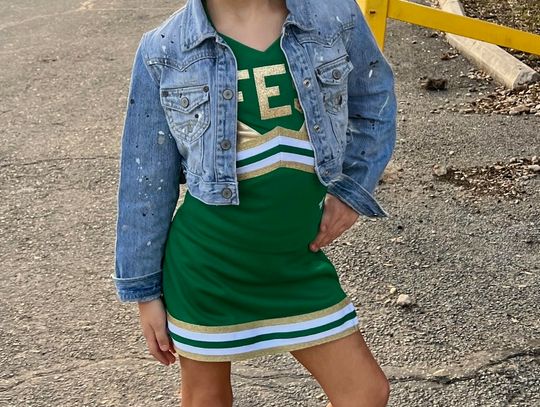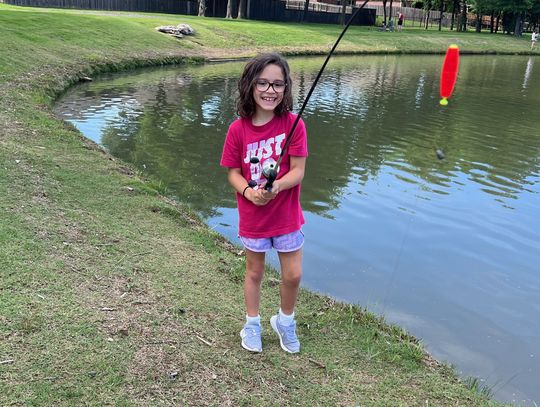https://helphopelive.org/campaign/23536/
All Eric and Stacy Dandridge want for their nine-year-old daughter, Acaiyah, is for her to be able to live a “normal” kid’s life: ride her bike, go fishing, play tag, jump on a trampoline.
But it’s going to take a trip to Spain to ensure that happens, with aid from the Help Hope Live organization.
Shortly after her seventh birthday, Acaiyah was diagnosed with Chiari malformation I — a condition in which brain tissue extends into the spinal canal. It occurs when part of the skull is misshapen or smaller than is typical. The skull presses on the brain and forces it downward.
As with most medical issues, the tell-tale signs of a life-threatening disease were masked by ambiguous symptoms.
“She was complaining that when she rode her bike, it hurt her neck and back. We just thought it was because she was tired,” Eric Dandridge said.
But the onset of pain, migraines and overall weakness prompted an initial trip to the family physician. Which prompted another trip to see a specialist. And yet another trip to a medical professional.
“We went through her primary care physician here in town,” Eric said. “He was very surprised by the degree of her scoliosis. He said he didn’t typically see that degree of scoliosis until girls are 15 or 16, and she had just turned 7, which was pretty alarming.”
The doctor ordered a full spine X-ray and referred them to an orthopedic specialist.
“He did some more advanced testing. Her reflexes were way off; one knee was hypersensitive, the other was almost non- responsive,” her mother said.
“He (the orthopedic specialist) had suspicions it was Chiari, so he sent Acaiyah to get a full-spine MRI, which confirmed his suspicion,” her father said.
He directed the family to find a neurosurgeon. “ That’s the part that freaked me out the most; a brain surgeon? What? My daughter’s going to have to have brain surgery?” Eric said.
The Dandridges soon had assembled a team of doctors in Houston; a neurosurgeon, a neurologist and an ophthalmologist.
In addition to the Chiari diagnosis, “ they also found she had a buildup of fluid on her spine. The brain is blocking the flow of the spinal fluid, it’s not going anywhere,” he said.
As a result of that blockage, her mother said, the fluid is not flowing because of her cerebellum.
She has what is called a hollow cord.
“ It literally encompasses her entire spine, from top to bottom, contributing to her scoliosis and impacting her nervous system,” Stacy said.
The solution, they were told, is decompression surgery. “They cut the back of the skull out, they will cut the skull, to give the cerebellar tonsils room where it’s not compressing against the spinal column or the brain stem,” Stacy said.
Chiari, she said, is not a “one size fits all” condition, but that’s the only surgery they will do for it here in the states.
“Of course, we didn’t want to cut the back of our daughter’s head out. If she falls backward and hits her head, she wouldn’t have bone there to protect her,” Stacy said.
Eric added, “It also eliminates her from living life as a normal child ... growing up unable to play sports, unable jump on trampolines, or go to amusement parks, or just wrestle with mom or dad – because it would just take one wrong event to cause serious injury.”
That’s when Stacy ran across a Facebook group of parents dealing with Chiari — and found an alternative.
“A woman reached out to me. She’s 50 now, and 11 years prior, she found out about this Institute of Chiari in Barcelona, Spain,” Stacy said.
Eleven years ago, the woman was wheelchair- bound, Acaiyah’s mother was told. “She had lived her whole life with Chiari. Her whole left side was ‘dead,’ she couldn’t walk. She went to Barcelona and had the filum surgery performed and was able to stand up and walk right away.”
The conversation immediately piqued the Dandridges’ interest.
A filum is a ligament or tendon on the lower spine that stabilizes the spine. Damage to the filum causes the spine to be pulled, and subsequently, the brain to be pulled.
“It’s a condition that doesn’t get any better, it progressively worsens as it continues to pull,” Eric said.
In the U.S., physicians perform intradural surgery. In Barcelona, it’s an extradural surgery. “They go in, they section it, clean it up,” Stacy said. “They straighten it, untwist it, whatever. It’s a 45-minute surgery.”
In February 2022, the Dandridges reached out to physicians at the Institute Chiari de Barcelona with all the imaging, CT scans, MRI results and diagnoses performed on their daughter in Houston.
“We got all uploaded on a disc and sent it over to them,” Eric said, “and they responded, ‘Yes. The surgeons have reviewed her imaging, and she is a candidate for the surgery.”
Enter Help Hope Live, a nonprofit fundraising organization that accumulates donations, tracks expenses, pays directly to the provider and eliminates the need for affected families to have to worry about bills, budgeting and balancing a bank account.
Help Hope Live — at Helphopelive. org — made a Youtube video for Acaiyah that refers viewers to the website, where they can donate.
“It’s super-accountable and responsible fund management,” Eric said. “I love how it’s set up. We won’t touch the money; they’ll be wiring it. It just protects everybody involved.”
The basic surgery is $21,500. “We have to stay in the area ... for two weeks, for the initial twoweek follow-up,” Eric said.
Round-trip flights for four — the Dandridges, Acaiyah and her 6-yearold brother, Beau — are about $1,500 per person.
“ We’re asking for $50,000, to take care of the surgery, the follow-up, her scoliosis, and for us being there for her,” her father said.
Donations can be made via email to: Mychiarijourney2021@ gmail.com.
The direct link for Acaiyah's fundraiser is: https://helphopelive.org/campaign/23536/
“This is all new to us,” he said. “We just want her to be able to live normal again, have a normal childhood, do the things she wants to do, without triggering pain. We just want her to be healthy.”









Comment
Comments